
Urethrotomy / Urethroplasty
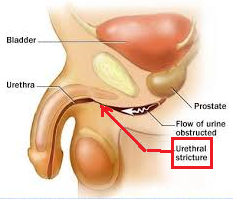
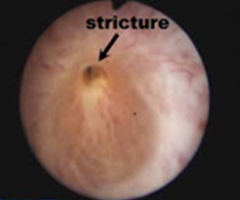
Urethral strictures can occur from an infection or more commonly, injury during catheterisation or endoscopic surgery. Urethrotomy is a procedure to divide the scar tissue that is causing the narrowing.
The diagnosis is easily made from the uroflow which will show a “box-like” pattern.
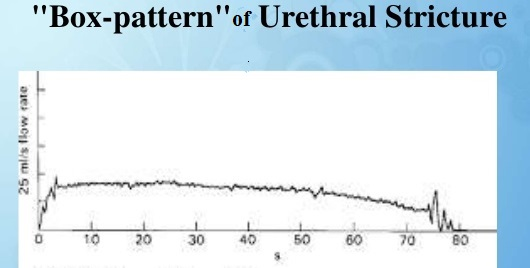
Uroflow pattern of urethral stricture
The location and length of the stricture can be determined from an ascending urethrogram xray.
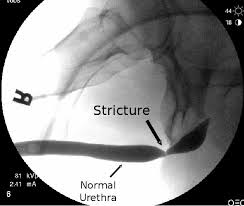
Ascending urethrogram
a. Urethrotomy
The surgery is done under general anaesthesia using a knife loaded onto a cystoscope (optical urethrotome). The stricture segment is sharply cut with this knife and dilators may be used to further stretch open the urethra. A Foley catheter is then inserted.
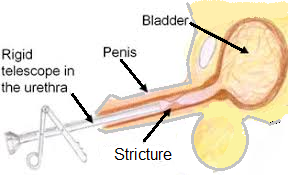
Urethrotome instrument to cut the stricture
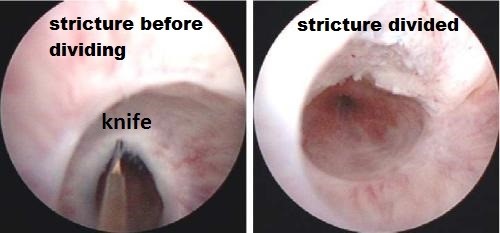
Cystoscopic appearance before & after urethrotomy
The challenge with urethra strictures surgery is recurrence. To prevent this, a catheter is best left in for an adequate period of time. Patients may also have to do daily self-dilatation for a period of 1 to 3 months. Frequent recurrences would require urethroplasty surgery which is more complicated to do.
b. Urethroplasty
There are 2 kinds of urethroplasty technique. The principle is to remove or divide the stricture scar and rejoin healthy urethra ends or interpose fresh tissue over the urethra.
1) Anastomotic urethroplasty – this is feasible only for short segment stricture < 2 cm long. The stricture segment is excised and the ends joined together over a silicon catheter. The catheter is left in for at least 3 to 4 weeks to allow for the urethra ends to heal.
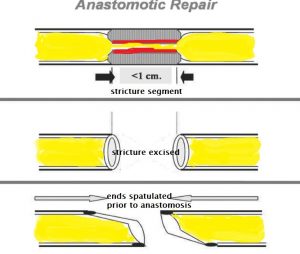
How anastomotic urethroplasty is done
2. Augmented urethroplasty – this is for longer segment strictures > 2 cm. Here, the stricture segment is opened along its whole length. A long piece of mucosa is then harvested from inside the mouth and laid over the stricture bed. The edges of the opened urethra are then sewn to the edges of this buccal mucosal graft (BMG). The silicon catheter is left in for 4 to 6 weeks as the healing takes longer. This is a more complicated surgery and requires judgment in the harvesting of the BMG as well as laying it.
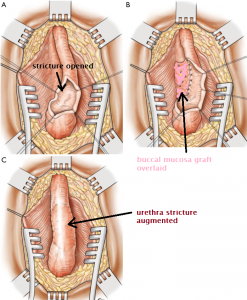
How augmented urethroplasty is done using BMG
Complications include:
- bleeding. This can be controlled by compression of the penis. The bleeding can last 1 week
- urine infection. This causes fever and painful, frequent urination
- recurrence of stricture. This tends to occur within 2 to 3 weeks. If so, repeat surgery is needed, or open urethroplasty surgery if the recurrence is too frequent. Daily self-dilatation with a soft Nelaton catheter can help prevent this
- anastomotic leak. This applies to urethroplasty surgery.
Desired outcomes:
- minimal bleed
- no recurrence ( 5 to 50% chance depending on length of stricture )
- no anastomotic leak ( 5% to 10 % chance )